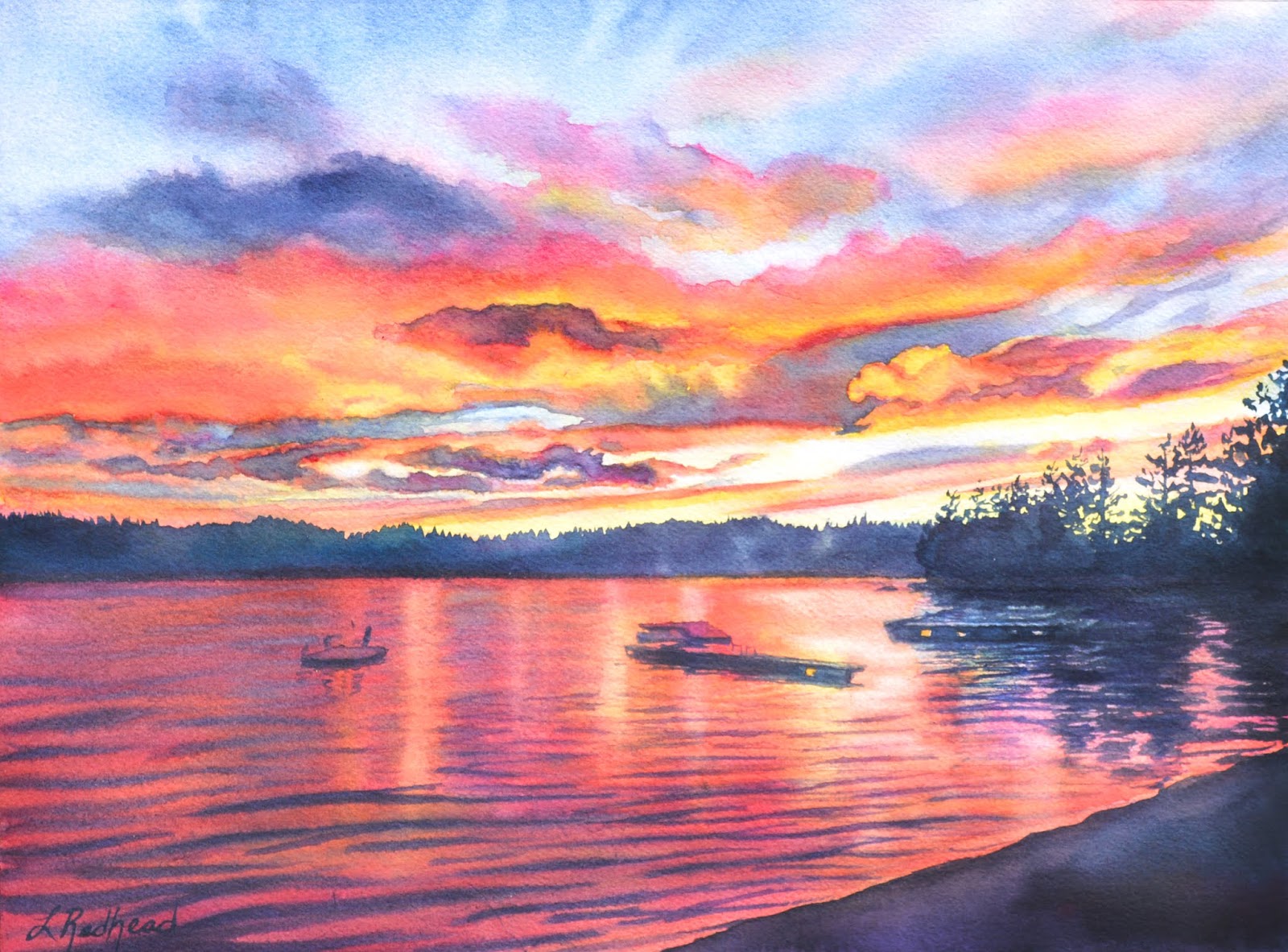Introduction: Embracing the Vibrancy of Watercolors
Watercolor painting, with its translucent layers and fluid dynamics, is a medium that beautifully captures the ethereal essence of natural landscapes, especially sunsets. Painting the sunset is not just about replicating colors on paper; it’s about conveying the fleeting mood, the warmth, and the interplay of light and shadows that define those magical moments. This guide, “Painting the Sunset: Mastering Watercolor Techniques,” delves into the art of capturing sunsets, offering insights into color theory, composition, and practical techniques to elevate your paintings.
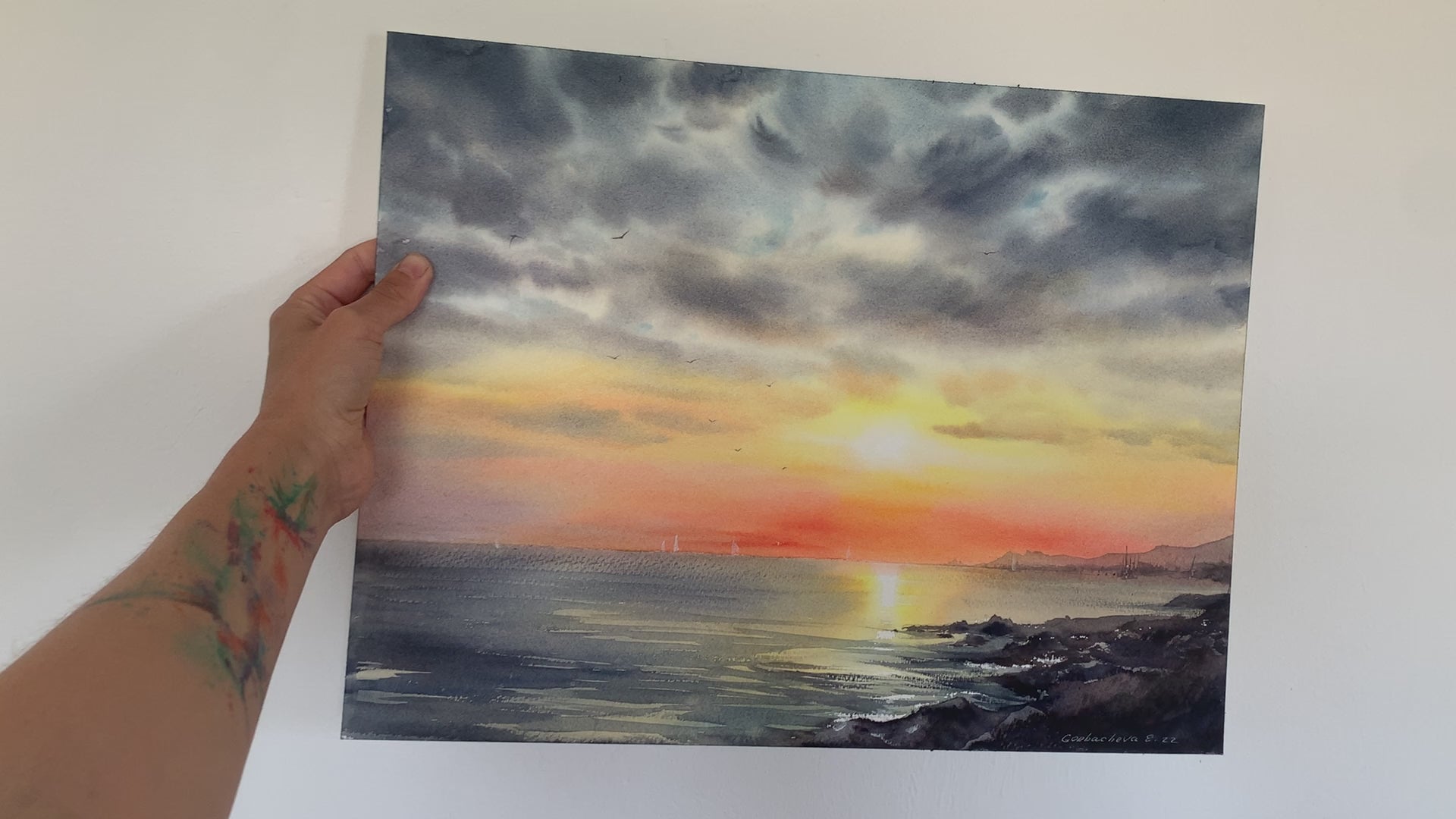
Understanding Color Theory for Sunsets
The heart of any sunset painting lies in understanding and manipulating color. Sunsets are a symphony of warm hues—yellows, oranges, pinks, and reds—that gradually transition into cooler blues and purples as the sky ascends. Start by creating a color palette specifically for your sunset, selecting a range of hues within these families. Remember, the key to a realistic sunset lies in subtle variations within these colors; blend your paints on a palette to achieve soft transitions between tones. Warm hues dominate the horizon where the sun sets, cooling as they reach the zenith. Don’t shy away from adding unexpected colors like violets or even greens to reflect the complexity of nature’s palette.
Composition: Framing the Moment
A compelling composition directs the viewer’s eye and tells a visual story. When painting a sunset, consider the rule of thirds: divide your canvas mentally into nine equal parts and place key elements along these lines or at their intersections. The sun itself doesn’t always have to be the focal point; sometimes, the play of light on clouds or the reflection in water can be more intriguing. Also, remember to include foreground elements such as silhouetted trees, buildings, or boats to add depth and context to your scene. These details anchor the painting, giving a sense of scale and enhancing the drama of the sunset.
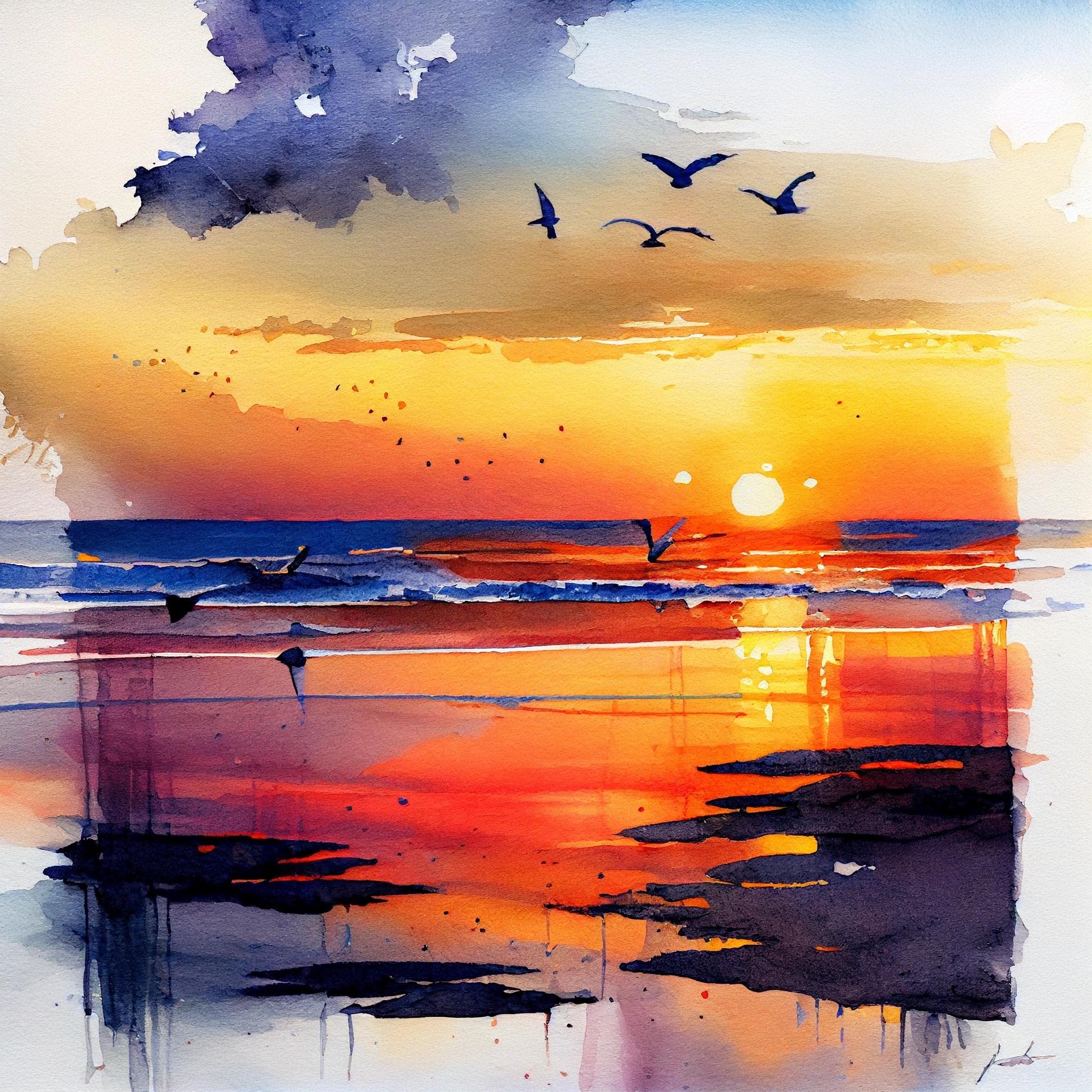
Layering Techniques for Depth and Dimension
Mastering layering is crucial in watercolor sunset paintings. Begin with light washes to establish the base colors and overall tone of the sky. Wet-on-wet technique, where wet paint is applied to damp paper, creates soft, diffused edges ideal for the hazy quality of distant clouds. Allow each layer to dry completely before applying the next to prevent muddy colors. Subsequent layers should progressively introduce darker shades and more defined shapes, working towards the areas of the painting that require the most detail. Silhouettes benefit from a dry brush technique, where less water is used to create sharp edges and textures.
Capturing Light and Shadow Play
Sunsets are characterized by dramatic contrasts of light and shadow. To emulate this, pay attention to how light interacts with the landscape. Areas directly lit by the setting sun will glow with intense, warm hues, while shadows take on cooler tones. Reflections in water can double the visual impact, so carefully observe and replicate the distorted mirror image of the sky. Use a glazing technique—applying thin, transparent layers of paint over dried layers—to enhance luminosity and depth in highlighted areas. Remember, shadows aren’t simply dark voids; infuse them with subtle colors to suggest the ambient light that surrounds them.
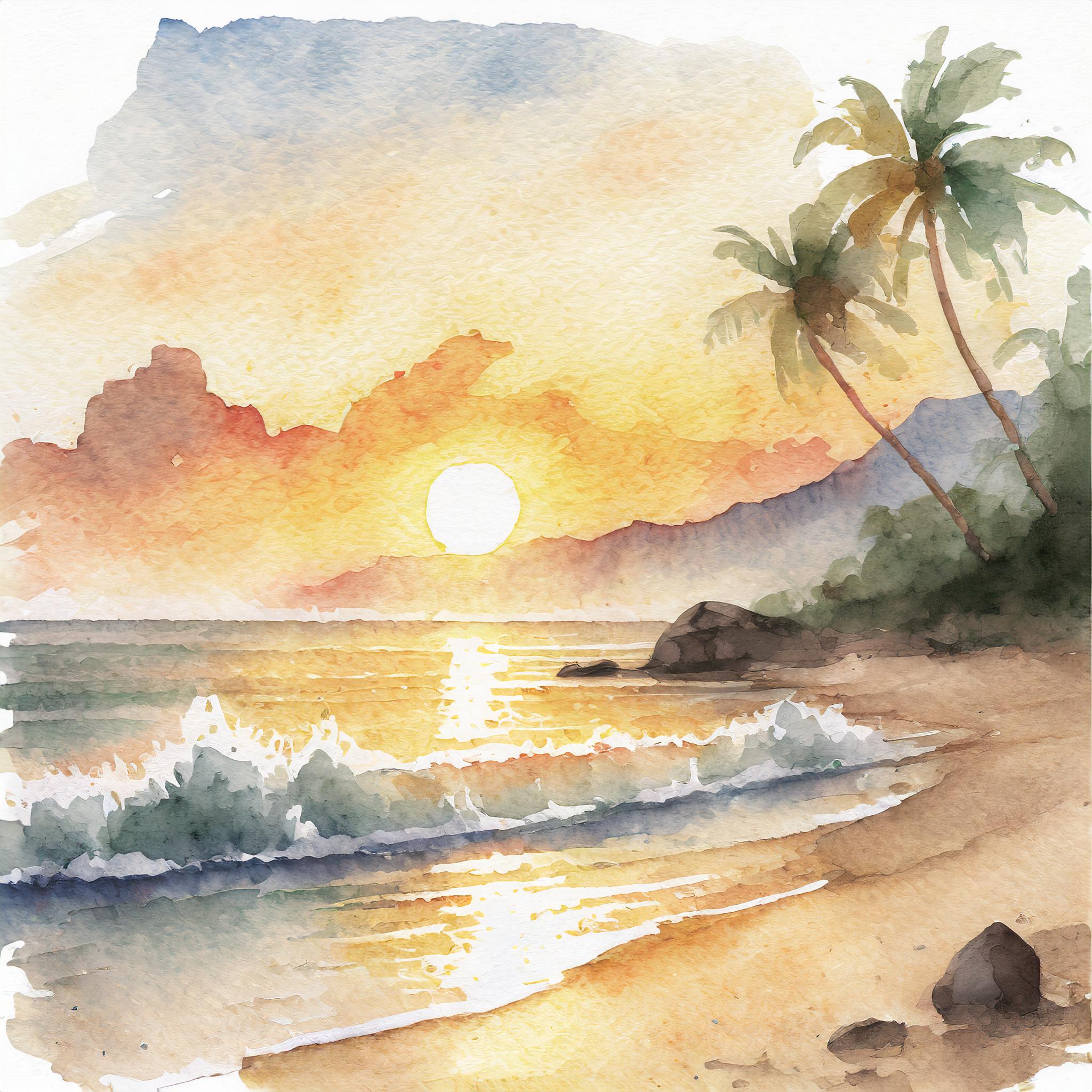
Creating a Sense of Movement
A sunset is a dynamic event, with shifting light and cloud formations. To convey this movement in your painting, consider the direction and speed of the clouds. Wispy clouds moving across the sky can be painted using diagonal strokes following their flow, while billowy formations might demand a more organic, swirling application of paint. Varying the pressure and angle of your brushstroke can imply wind direction and intensity. Don’t hesitate to leave some areas of the sky relatively unpainted, allowing the white of the paper to represent the last glimpses of daylight or breaks in the clouds.
Finishing Touches: Enhancing the Emotional Impact
The final touches are what transform a painting from a mere depiction into an emotional experience. Splashes of pure, bright pigment in the sun’s vicinity can evoke a sense of awe and wonder. Conversely, softening edges and blending colors in the upper reaches of the sky can create a serene, contemplative mood. Pay attention to the mood you wish to convey and adjust your colors and brushwork accordingly. Finally, consider adding a touch of iridescence or salt to create sparkling effects on water or in the sky, mimicking the natural glitter of sunlight.
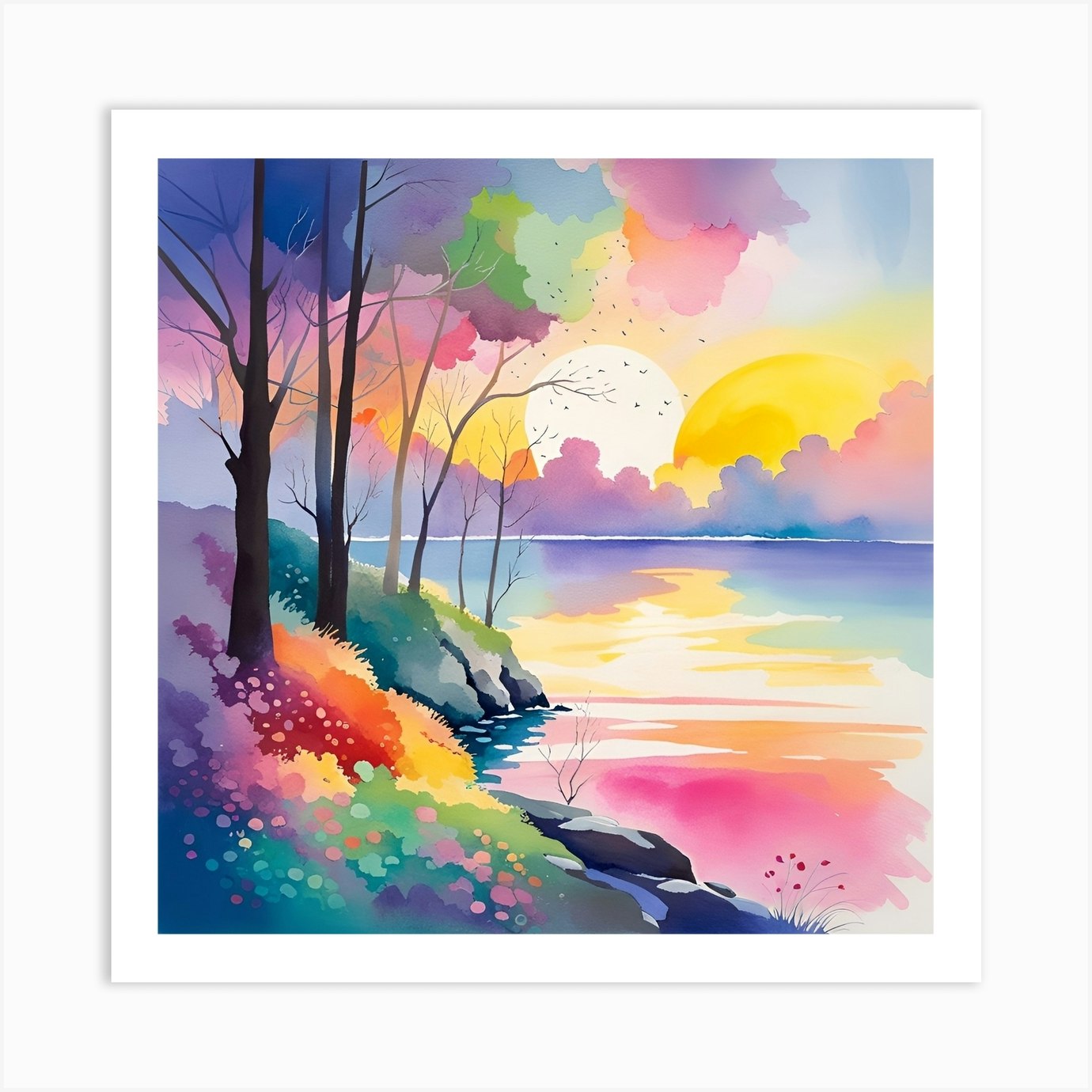
Adding Depth with Atmospheric Perspective
To give your sunset painting a sense of depth, employ atmospheric perspective. This technique involves making objects in the distance less distinct and cooler in color than those in the foreground. As the sun sets, the atmosphere diffuses and scatters light, causing distant elements to appear bluer or grayer. You can achieve this effect by lightly layering cool, pale tints over the far-off landscape or clouds. Soften the details and edges of these distant objects, suggesting they are enveloped in the haze of the setting sun.
Silhouettes and Contrasts for Drama
Introducing silhouetted elements against the glowing sky can dramatically heighten the visual impact of your painting. Trees, buildings, or even people can be depicted as stark black or deep blue shapes against the vibrant sunset hues. This contrast not only emphasizes the brilliance of the sky but also adds a narrative element, inviting viewers to imagine stories behind the silhouetted forms. Be mindful of the placement and shape of these silhouettes to balance the composition and guide the viewer’s eye.
Emphasizing Texture for Added Realism
Incorporate various textures to bring life to different elements of your scene. For instance, use dry-brushing techniques to depict the rough bark of trees or the choppy surface of water disturbed by wind. On the other hand, smooth, blended strokes can convey the seamless expanse of the sky or the stillness of a reflective pond. By thoughtfully varying your brushwork, you can make each part of your painting feel tangible and contribute to the overall atmosphere.

Conclusion: Embrace the Journey
Mastering the art of painting sunsets with watercolors is a journey of continuous learning and experimentation. Each painting captures a fleeting moment in time, unique to the artist’s interpretation and emotional response. As you practice these techniques, remember that the joy of watercolor lies in its unpredictability and the way colors blend and interact on the paper. With patience, observation, and a willingness to embrace ‘happy accidents,’ your paintings will evolve, mirroring the ever-changing beauty of nature’s own masterpieces. So, pick up your brushes, let your creativity flow, and celebrate the enchantment of painting the sunset.





